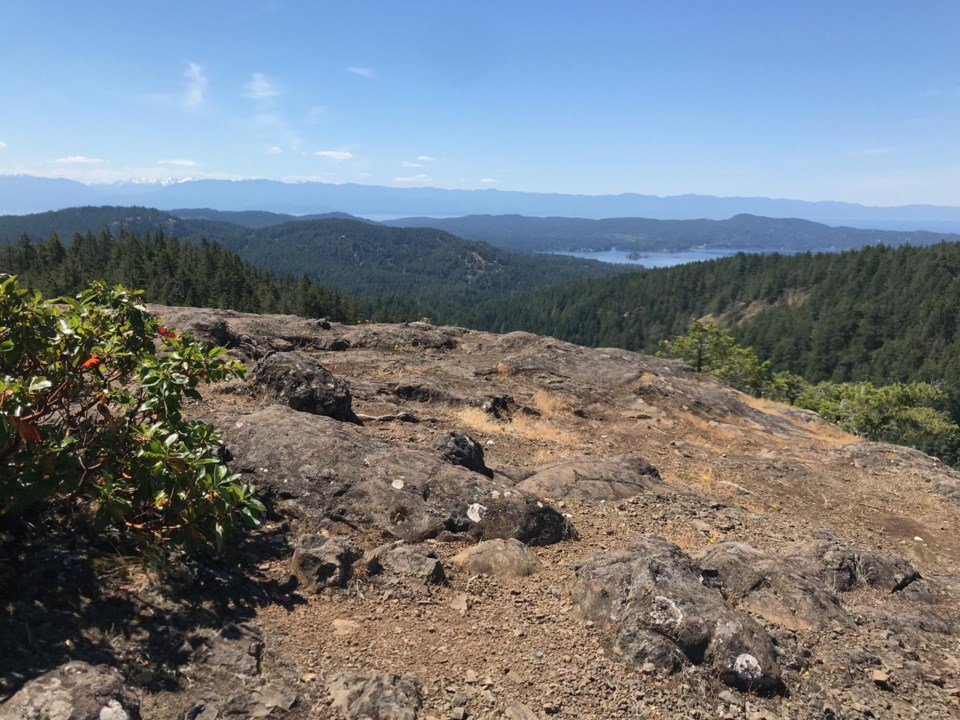Deliberation is underway about alternatives to the only practical link between the capital region and the rest of the Island.
The main option being looked at by the B.C. government so far is the construction of a new highway west of the existing Malahat. This is a terrible idea, for many reasons.
While the vast majority of forests on Vancouver Island are open to logging and other industrial development, a network of protected areas from Goldstream to Sooke buffers the Greater Victoria area to the northwest.
The Sea-to-Sea Green and Blue Belt was established in the 1990s due to efforts of activists such as Alison Spriggs, Ray Zimmerman and many others and thanks to the vision and foresight of past Capital Regional District directors and staff. The area protects our water supply and is an asset in the fight against climate change.
The alternative-highway proposal requires this network’s crown jewel, Sooke Hills Wilderness Regional Park, to be opened up for the new highway to go right through.
The few protected areas we have, fought for by dedicated citizens, should be left protected. For that reason alone, this proposal shouldn’t be considered.
It’s clear the current situation on the Malahat is untenable. Car crashes and other emergencies sometimes close the highway, leaving tens of thousands of people stranded for hours or even days.
I commute into Victoria on the bus from Shawnigan Lake, so I know the inconvenience of these closures well. I haven’t heard anyone claim we don’t need to address the issue of the Malahat bottleneck.
But we have to talk about the best course of action.
The potential benefit of a backup route is outweighed by the damage and risks it would create.
Opening a protected area for something as high-impact as a highway would be a huge mistake. Managing our water will only become more difficult in the future, and bringing new infrastructure into the buffer area of our drinking watershed should be a non-starter.
And the road itself could be just the tip of the iceberg.
The notion that the new highway would be opened only when the Malahat is shut down, in a region as crowded and mobile as ours, is naïve. We’d then have a direct link between Langford, one of the fastest-growing municipalities in the province, and south Shawnigan Lake, no slouch itself when it comes to sprawl and subdivisions. Once the space between is opened and the status of the protected area is changed, the Sooke Hills would be under permanent pressure from municipalities looking for space to grow and developers looking to cash in.
This slippery-slope scenario is a nightmare, and the fact that we’re considering it for yesterday’s infrastructure is particularly frustrating.
In B.C., where a big chunk of our emissions come from transportation, fighting the climate crisis means changing the way we get around. Put simply, our planning must make public transit more convenient and driving less convenient.
Investing in rail transportation using the existing Esquimalt-Nanaimo corridor is an opportunity for us to show bona fide leadership in addressing the climate crisis. Every few passengers on a train is a car off the road, meaning less pollution and lower risk of a highway-closing crash. Other measures, such as lowering the speed limit on the Malahat, should be considered too, but at the end of the day, the only true solution is getting cars off the road.
On Feb. 13, the Capital Regional District declared climate change an emergency. That the same directors must now consider sacrificing the integrity of a valuable climate-change buffer for infrastructure that helps drive this crisis is a particularly dark joke.
The provincial government must slam the brakes on this idea and engage with the T’sou-ke, Malahat, Tsartlip and other nations that have been largely left out of planning and infrastructure decisions as this region has developed. We need long-term solutions, not Band-Aids, and we won’t achieve them without following the leadership of the original stewards of this land.
Like everyone who lives here, I think we have the potential to model what a healthy region can be. Ramming a highway through a cherished protected area and throwing money into a system we need to transition away from threatens this potential.
Premier John Horgan and Transportation Minister Claire Trevena should abandon ideas fit for 1959 and champion solutions designed for 2019 and beyond.
Torrance Coste is Vancouver Island campaigner for the Wilderness Committee.



